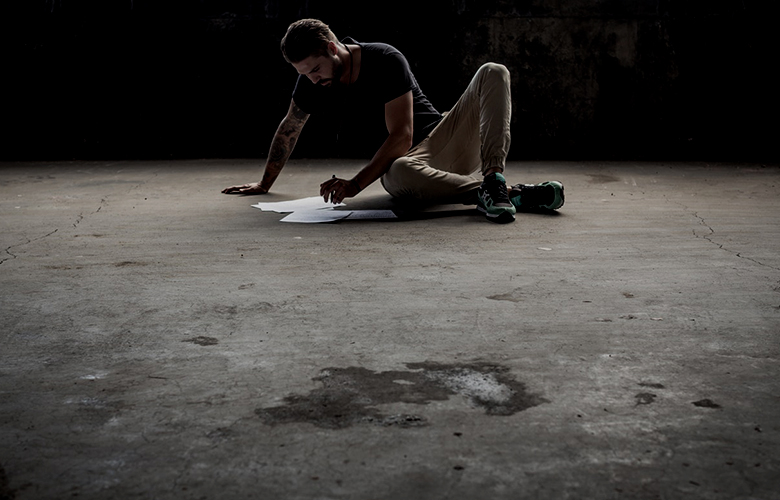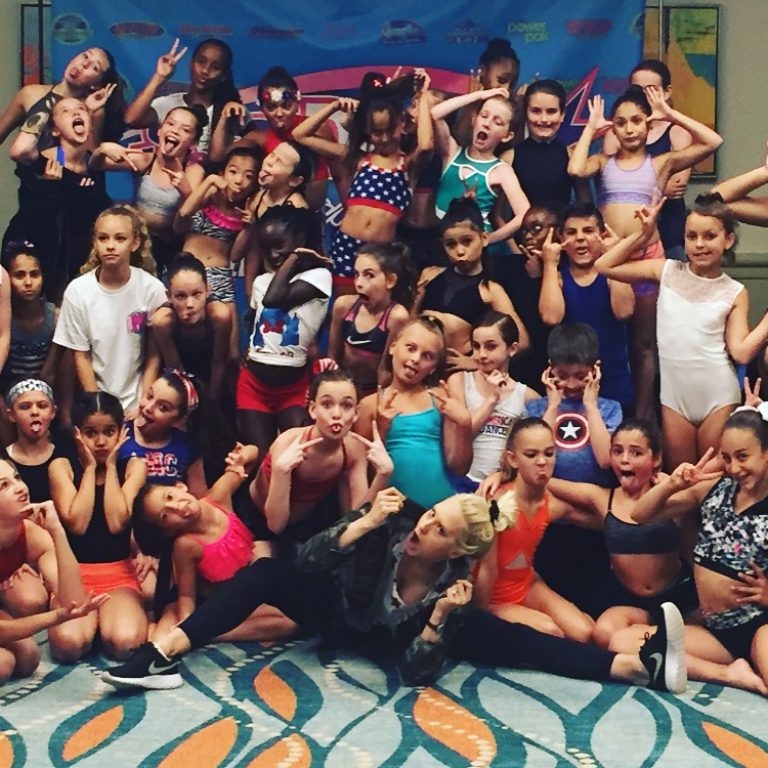
When I started getting “special guest” teacher gigs, I thought I was more than prepared. I had taken tons of conventions as a kid, was overeducated with plenty years of post college dance and movement study, and had a well-rounded performance resumé. In theory, I was ready. I like children especially, and couldn’t wait to share my knowledge and experience. After joining this new professional platform, I wish I had had these six helpful hints from the get-go.
Being knowledgeable and passionate were not enough to be successful and effective. There are plenty of extremely successful artists and teachers in the business, and they may or may not have the substantial background acceptable to a former dance-snob like myself. How and why were they so successful?
What I had to learn as a “master teacher” had more to do with communication and knowing the business than it did with technique or style. Which is why I quote “master teacher.” If you go by Malcolm Gladwell’s 10,000-hour rule suggesting that in order to master a craft one must put in ten thousand hours of practice, it may take a while to master “master teaching.” Assuming you have put your time in mastering dance, let’s take some short cuts to effective master class teaching.
What is the age range of your students? How often do they dance? Are they professional dancers? Are they college students? How many dancers in your crowd will go on to be professionals or teachers?
Clearly defining the above questions will help you with your approach. Understanding just how serious the students are will help you gauge the climate and atmosphere you create. Kids almost always want to have fun. Get creative and give important lessons without losing the element of fun. University students and serious dancers are ready to be challenged by more information.
Also, reading up on today’s generation and how they communicate may help. Kids today may not respond, or be the same, as when you were in training. Like it or not, you may have to communicate differently to be successful.
Teenage kids will not respond in the same fashion as pre -professional college kids. Some kids may act “too cool,” but don’t let that rough exterior affect your mood, or make you feel insecure with what you know. There is a reason that each kid enjoys dance, and we as teachers do not know what is going on in each kid’s life. Obviously, being rude is unacceptable, but it is easy to mistake a quiet room for a disinterested crowd.
I know I am most likely not going to single handedly change how kids conduct themselves in classes these days, so I try to be strategic with my lessons and how I get my points across.
Do the job you were hired for, not the job you wish you were doing. For example, if you are hired to teach at a studio for a workshop and you would rather be teaching on a collegiate level, don’t try to turn recreational dancers into aspiring professionals in an hour.
Be ready to make your material easier or more difficult on the fly. You only have students in class for a limited amount of time, and you will not be asked back to teach again if it is overly stressful and the kids leave frustrated. DO NOT teach over the students’ heads, assuming that they will need to learn to “keep up.” Your job is to teach for an hour or so, not judge how the students’ teachers are instructing them.
Know when and how much to give information and education to “mix in.” If the kids are picking up well and nailing it, then you can add in more details. Also, know when to entertain and be funny. Kids respond to humor, and that will cut any tension in the room and make the students feel comfortable. In essence, be present, read the “vibe,” and act accordingly.
Know your material inside and out. If you use counts, know them. If you use musical cues, know them. Kids and spectators can sense if the teacher does not know their material and they are most likely paying a pretty penny to be there.
Be clear with what you want to accomplish within the given time frame. If you have an hour and need to give an abbreviated warm-up, or across the floor, know how much time you want to spend. If you have more than one class, you can build on lesson plans. If you have only one class, know what you want to leave with the students, and how you want to be remembered.
Remember: Dancers, and kids especially, just want to dance! Unless the class is a seminar on a specific subject, dancers usually don’t want to stand around and listen to you sound off for an hour. If possible, play the music prior to giving choreography. Be sure you are letting them try the movement phrase/combo with music, especially early in the process. The repetition also helps them gain confidence. It is easy to get caught up with teaching a combo, and suddenly there are ten minutes left in class.
This sounds remedial, but if you have 200 kids in the class, it pays to have effective methods of crowd control. Using an authoritative voice and switching lines regularly works well. Having kids squat down in front so the upstage dancers can see can help. While working with children, having specific ways to call kids on the dance floor is fun. Call the kids by age, birthday, favorite color, etc. Telling groups where to stand in the room can prevent wasting time as they switch groups. If you don’t want kids standing in the back of the room while another group is dancing, tell them clearly what is expected. Don’t assume they know anything.
Using demonstrators helps you give more attention to the students while making the chosen assistants feel special. Kids love to be called out for anything positive.
You, as the teacher, have had your time to shine. It is now time to let kids take center stage. Students are usually more interested in learning how to get themselves to your level. Excessive talking about yourself, even if it is completely valid and true, may not be received in the way you intend. For example, going off on rants about your skill of dancing on camera vs. dancing on stage would be better received if you were to make an exercise executing the same 8 count movement phrase, two very different ways.
You may have a very specific idea of what dance is and what it means to you, and your students may differ. That’s what makes dance special and unique to everyone. Remain open minded, even as a teacher, and respect the students as the future of dance. You are instructing them in one subject per class, not in dance as a whole. Students sense immediately if a teacher does not honestly respect them. Being overly strict or serious does not make you more important. Being light-hearted does not make you less effective.
If you don’t have children yourself, I urge you to conduct a survey. Kids especially will tell you which teachers are their favorites.
The answers will be based on how nice the teachers were and how they, the students, felt in class. Favorite teachers are rarely based on how great of a dancer he/she is or what they have done professionally. Remember: kids are inherently self-centered. They are learning for themselves and forming their own opinions. You as a teacher can hugely influence students, so long as you go about it the right way.
Keep in mind the mission statement of the person or institution who hired you as a master teacher. Is it an education based program? Is it a business? If so, who fuels that business? Who is sitting around watching your classes?
If you are teaching for an educational institution, it is more likely that the process of learning and technique will be valued. Breaking things down and spending time on building blocks would most likely be appreciated. If you are working for a company, what is the objective? If a fun learning atmosphere is expected, create it. If dance studio owners are supporting the event, what would those dance studio owners want to hear from a master teacher? Reinforcing what dance teachers emphasize is always a good thing. In addition, look to see who is sitting around the perimeter of your room. Emphasize in your class what you have to offer that teachers would appreciate. If there are parent observers of the students, ask yourself, “Why do parents pay large amounts of money for their kids to dance?” You can always remind the students to thank their parents/guardians and dance teachers for their time and hard work.
Remember: you are being watched. If you get crabby because of the overall lack of energy in the room, the only thing that the parents remember is what you say in that hour. Don’t say anything that may come back, for any reason, to haunt you or the people who hire you.

Learning From Shameless Opportunists: 7 Ways To Ensure Success
Freelance Artist Gig Life: Do Something


Author Jill Ann Wolins started dancing as a child and continued competitively at the age of 9. She extended her dance education at the State University of New York in Buffalo, receiving her BFA as a dance major. Jill was awarded numerous scholarships for dance including Duke University American Dance Festival (ADF), Giordano Chicago, and six years at Steps on Broadway, NYC, which aided her transition into the professional dance world. Her professional dance career started with Disney, Orlando. Jill continued as a NYC Radio City Rockette for ten years. Broadway National tours include The Producers and Will Rogers Follies, and regional tours include Sweet Charity and Grease! TV and Film credits include The Producers, David Letterman (CBS), Disney Christmas Special (ABC), and Radio City Christmas Spectacular holiday commercials. Some of Jill’s favorite credits include assisting the choreographer, John Dietrich, for the opening segment of the Macy’s Thanksgiving Day Parade, performing in tribute to Lena Horne at Lincoln Center, and dancing with Chita Rivera at the Kennedy Center, DC. Some international dance and teaching experiences include appearances in China, Japan, Russia, UK, Australia, and the United Arab Emirates. Jill Is proud to have worked with the United Nations Association in HIV/AIDS affected areas of South Africa. Jill currently travels across the country and around the globe teaching master classes and setting choreography. She is currently a faculty member of the Wild Dance Intensive and Power Pak Dance Camp. Jill teaches the Top Gun Audition master classes at Starpower National Competitions and co-hosts prestigious dance events like the World Dance Championships. Because Jill values guidance and education for young dancers, she also enjoys being co-director of the World Dance Pageant. Jill is thrilled to share her books in the “Are You Ready?” series. “Dance Competitions: Are You Ready?” is perfect for young competitive dancers, guiding them to have the best, most successful experience possible. “Dance: Are You Ready for the Next Step?” is a must read for all dancers that want to dance in college and beyond, preparing them to be successful in the professional dance world. Jill is proud to be a part of the dance community in TheatreArtLife. We are an international community of dancers and artists, united through our love and passion for dance!
Read Full Profile© 2021 TheatreArtLife. All rights reserved.

Thank you so much for reading, but you have now reached your free article limit for this month.
Our contributors are currently writing more articles for you to enjoy.
To keep reading, all you have to do is become a subscriber and then you can read unlimited articles anytime.
Your investment will help us continue to ignite connections across the globe in live entertainment and build this community for industry professionals.